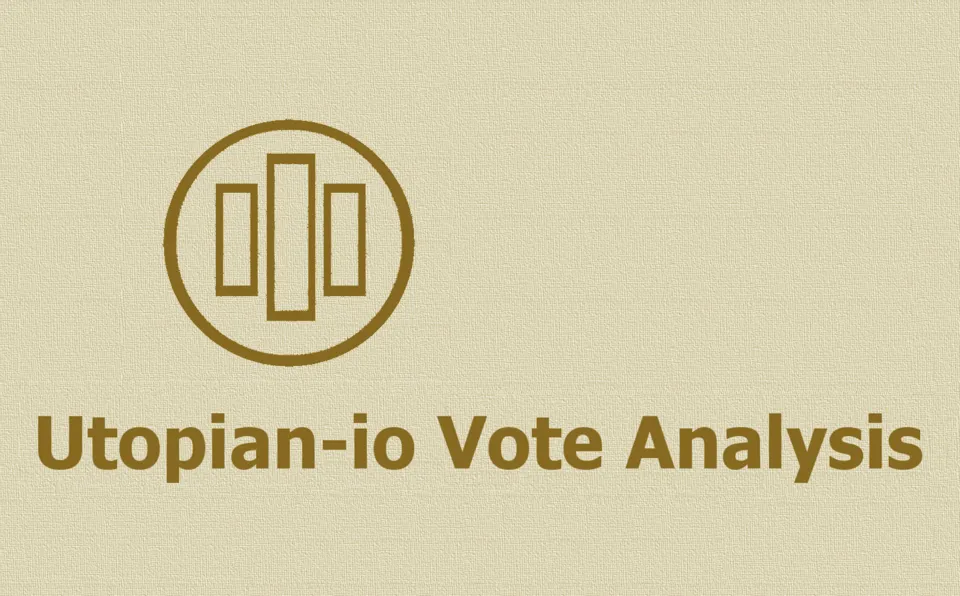
I've had a brief hiatus from posting to Steem. Since the start of the year I've been focusing on learning app development and picking up a new coding language. The more I look at the opportunities and new projects in the crypto space, the more motivated I become to increase my dev skills and get involved. Hopefully I'll be able to put this new-found knowledge to good use later in the year.
In the meantime I've a few analyses to catch up on, starting with the Utopian voting studies. I'll post up December 2018 today and January 2019 once I've finished processing that data. There look to have been some interesting changes.
As usual in this monthly analysis I look at the voting behaviour of Utopian-io across the month and compare to prior months. I aim to:
- Examine the breakdown of votes awarded by category and contribution type;
- Consider numbers of contributors rewarded for each contribution type;
- Review the Utopian vote timing to see whether posts are voted earlier in the seven day payout period; and
- Celebrate another great month for Utopian using some summaries of the top 50 contributors.
1. Allocation of Utopian-io votes by category
These pie charts illustrate how the Utopian-io vote power has been allocated between categories over recent months:
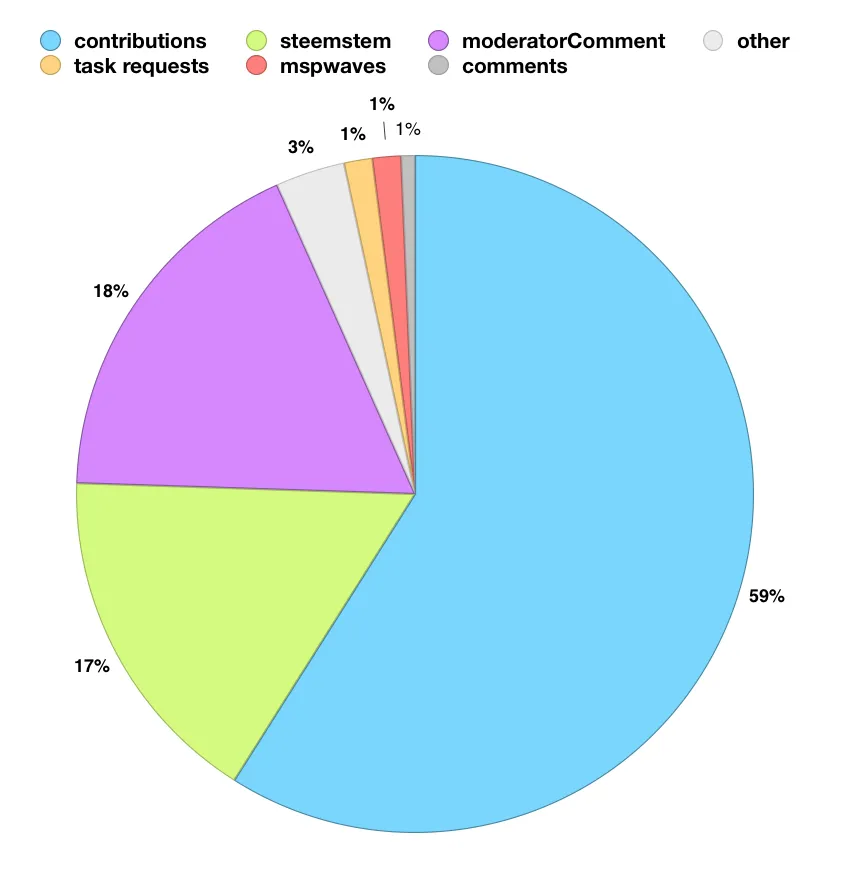
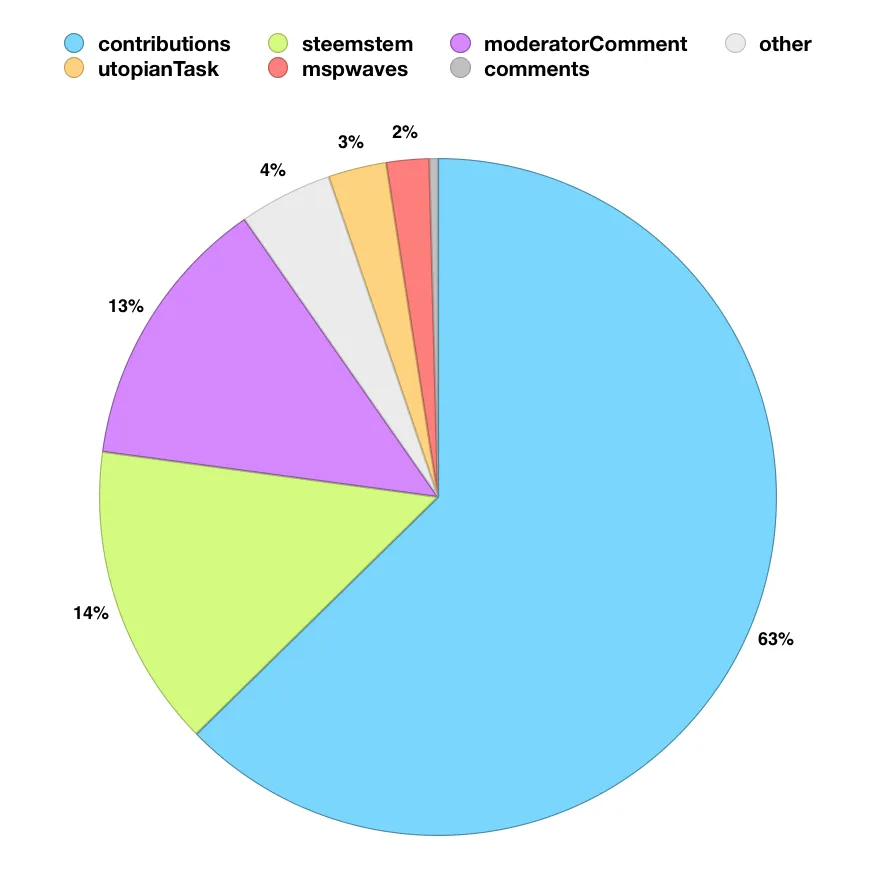 | 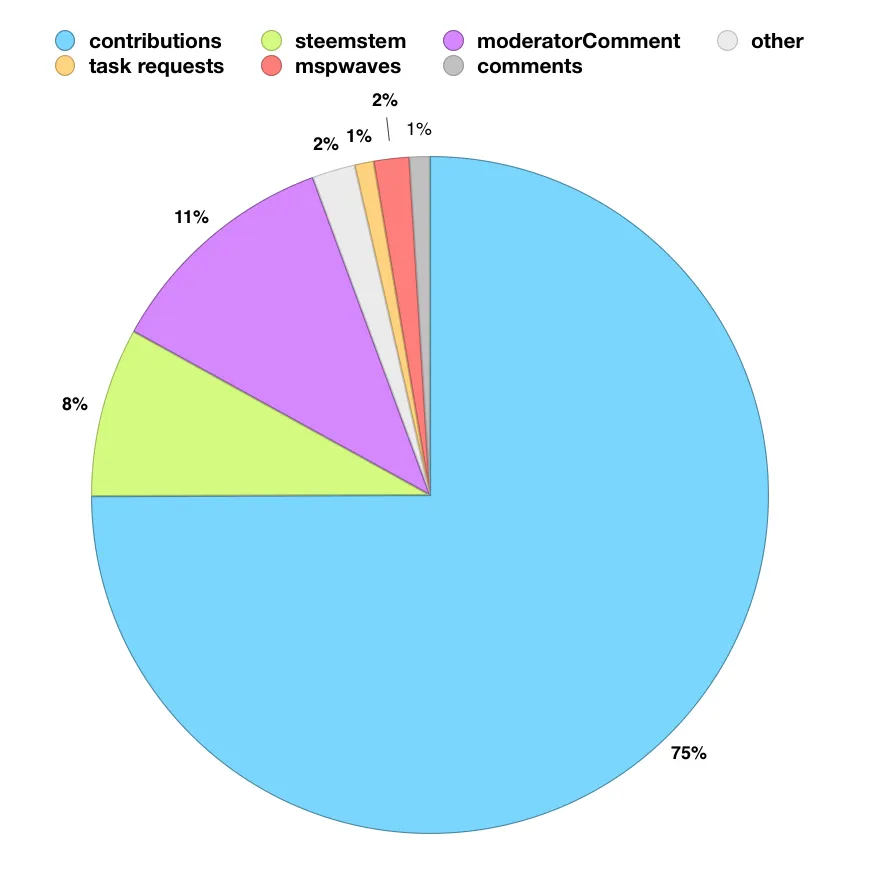 |
Task requests are now treated as a contribution type rather than a separate category for voting purposes. Adding together the contribution and task request category percentages shows a 16% drop in voting power allocated to contributions from October (76%) to November (66%) to December (60%).
The change from November to December is largely due to the increase in voting power allocated to moderator comments (up from 13% to 18%). This arose from a change in the reward structure in mid-December through which moderator rewards were increased to compensate for the significant fall in the Steem price (mid-December was the low point of the bear market).
For those new to Utopian a brief explanation of the categories of votes:
- Contributions (blue): Utopian-io mainly rewards contributions to open-source projects. Contributions are not just limited to coding (development) but cover a wide range of technical skills including graphics work, translations, tutorials, copywriting, bugs and ideas.
- Moderator comments (purple): Utopian has a team of over 50 expert moderators who review and score every contribution. Utopian rewards the moderators for their work by voting on their review comments.
- Task requests (yellow): Open source project owners can make requests for work to be carried out on their projects. These take the form of task requests. Only a small number of project owners currently use task requests but they can represent some of the most exciting opportunities for the Utopian community.
- Trails: Utopian-io also supports a number of Steem communities, typically those with links to the open-source world or science and technology. Two of these are separated out in the chart: steemstem (green) and mspwaves (red).
- Other comments and posts (grey): These are one-off votes on posts of high value or interest to the open-source community, such as the arrival of a new project into the Utopian VIPO club. There will also be a few votes that have fallen through the filters I use to determine the category separation.
2. Breakdown of Utopian-io votes by contribution type
This second comparison takes the contribution vote and task request amounts above (blue and yellow segments) and separates them between contribution types for the months in question.
There are fifteen contribution types (fourteen for October, with blog and iamutopian aggregated).
Again, the pie charts to summarise across each month:
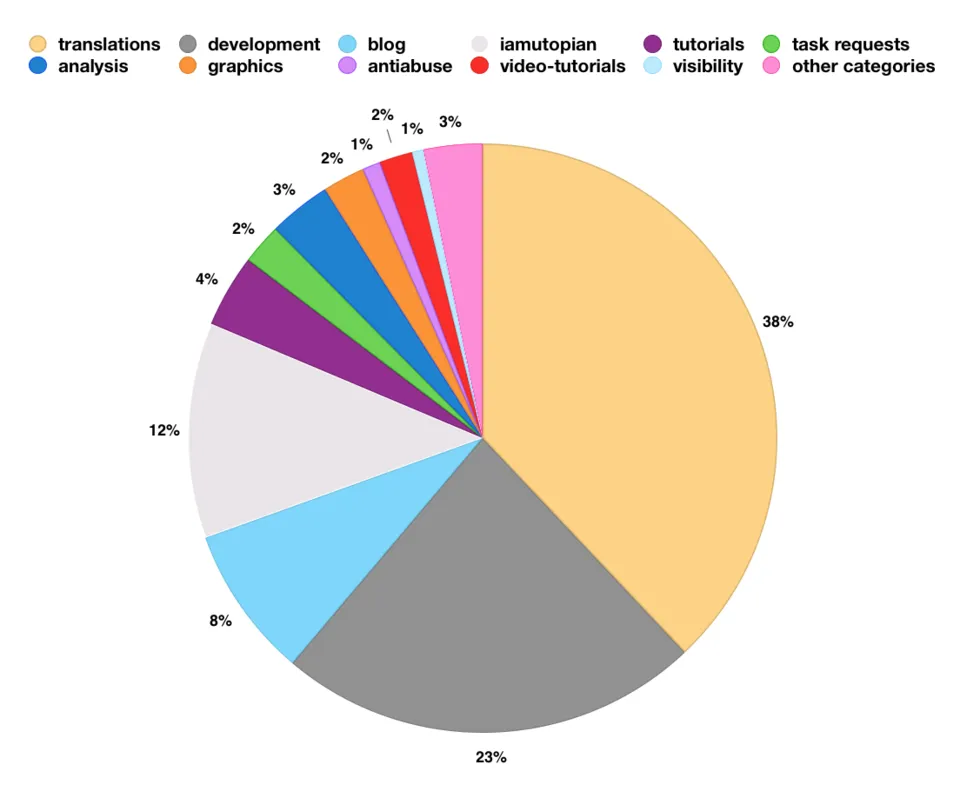
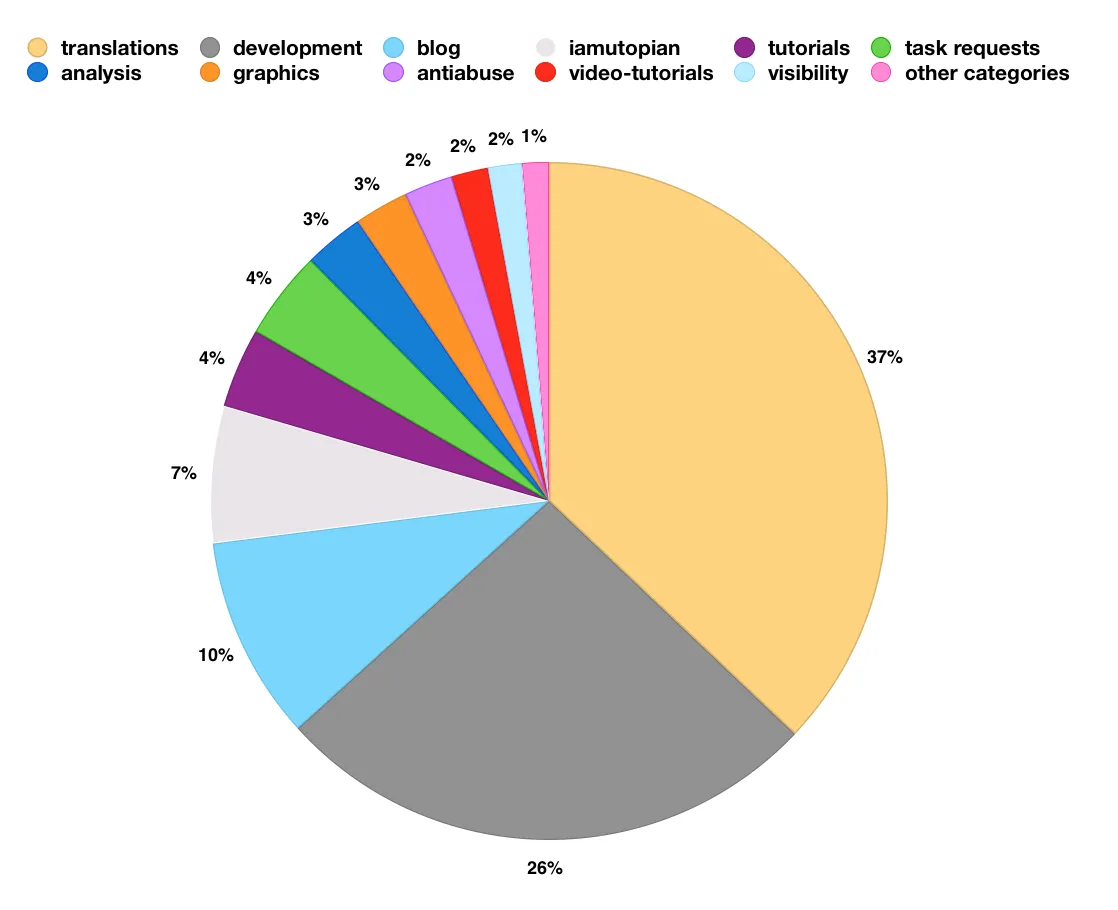 | 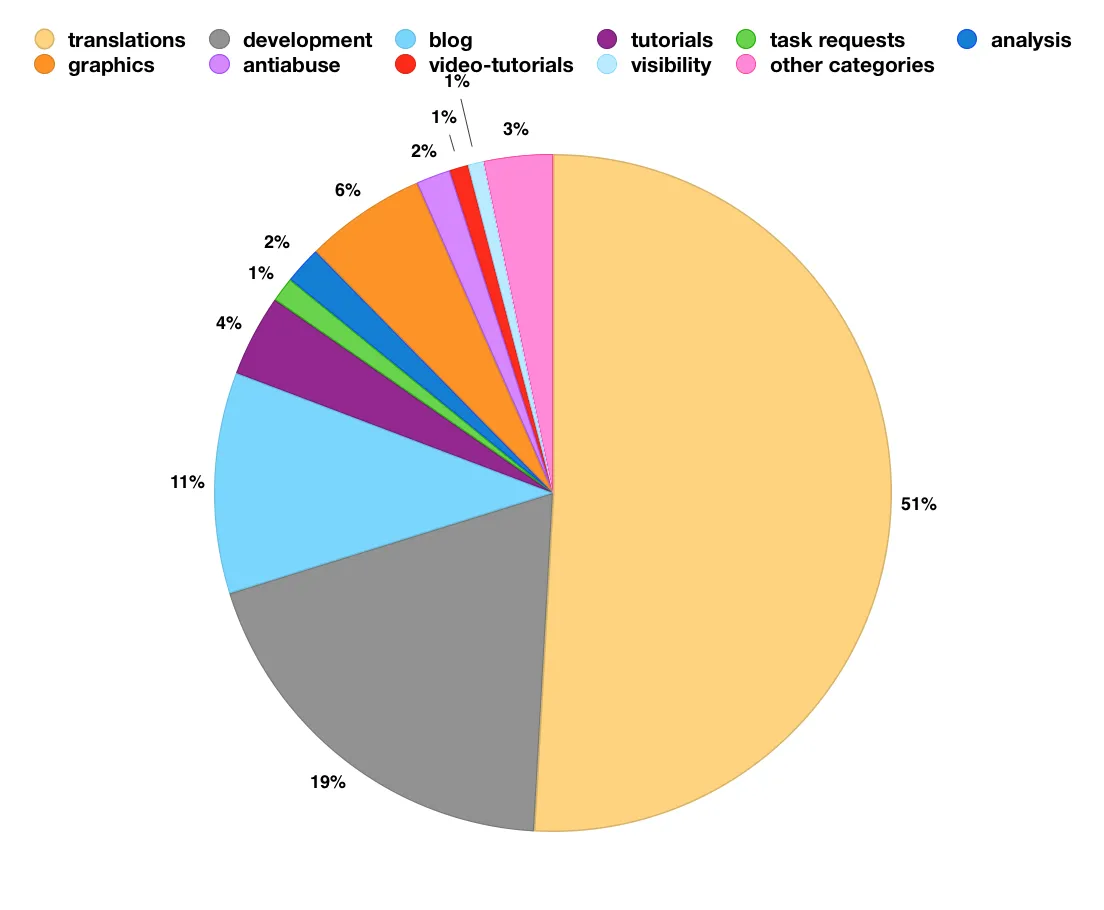 |
The comparison from November to December is very steady. The main movements were:
- iamutopian: +5%, jumping up to be the third largest category.
- Development -3%, Blog -2%.
Translations remained the largest contribution type.
3. Numbers of contributors rewarded within each contribution type
The following table looks at the number of contributors rewarded by Utopian-io in each contribution type, with a comparison against prior months.
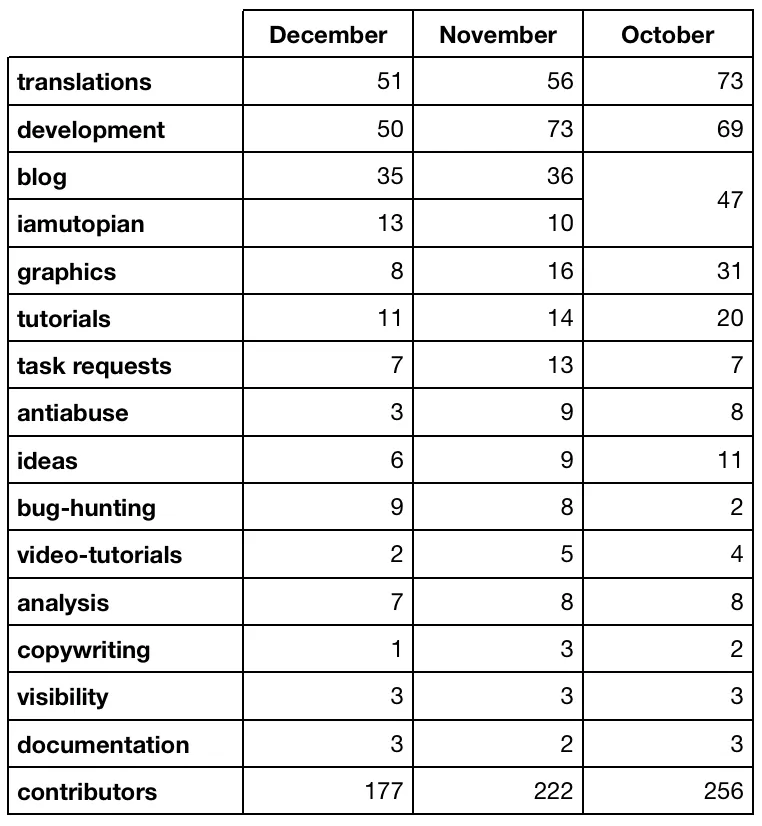
There has been a general contraction in the number of contributors rewarded by Utopian-io from November to December. This is likely to be due to:
- A general fall in contributions (and posting on Steem in general) with the reduction in the Steem price.
- The change in the reward structure in mid-December which increased the maximum voting percentages per contribution. This was to combat the significant falls in the Steem price and keep rewards attractive. Higher voting percentages per contribution would lead to a lower number of contributions rewarded, all other things being equal.
4. Utopian-io vote timing
The chart below looks at the timing of votes made by Utopian-io as measured against the seven day voting period for posts.
The y-axis represents the duration in a post’s life at which it is upvoted by Utopian-io. The x-axis shows time across the month.
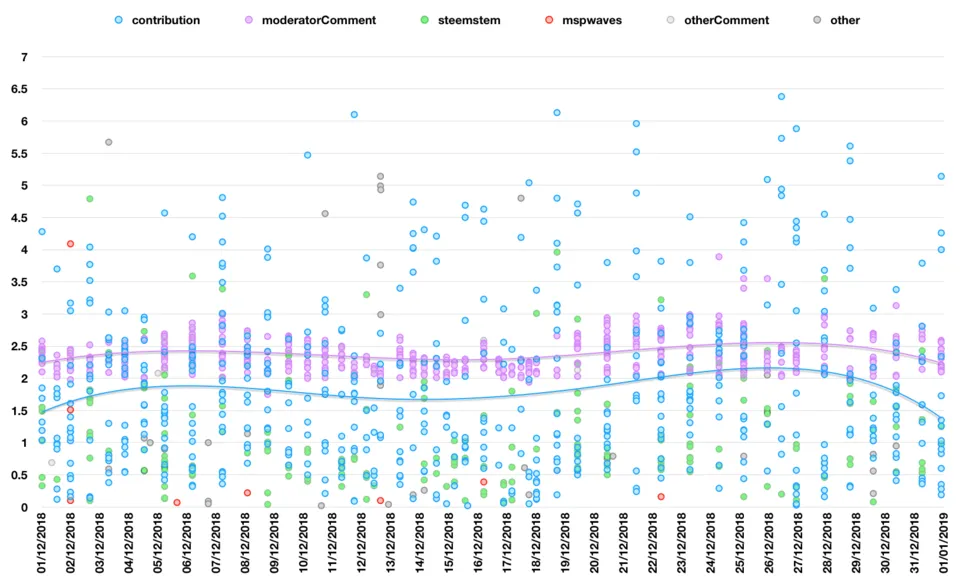
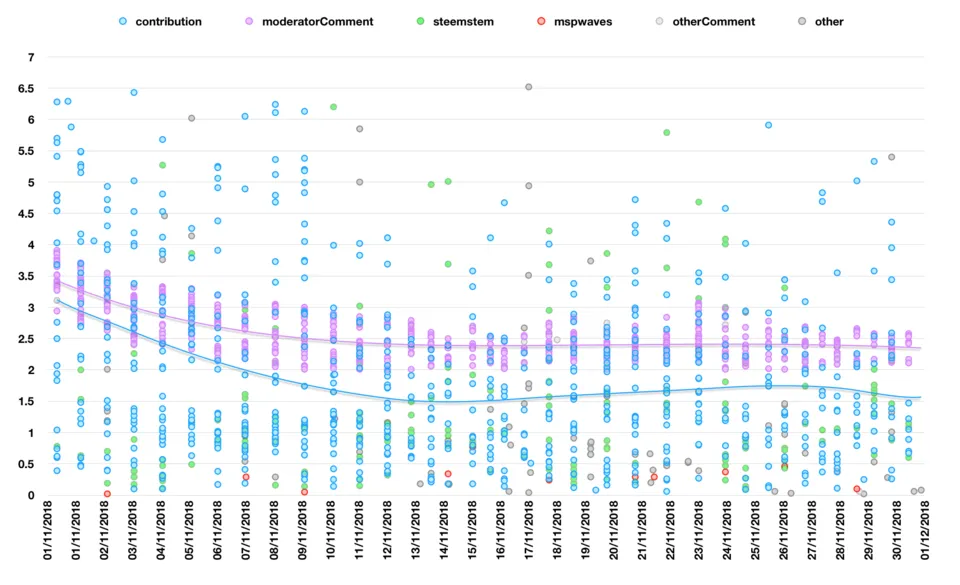
The timing of voting is broadly unchanged from November to December, with contributions voted on average around the 1.5 - 2 day mark and moderator comments around 2.5 days. Given every Utopian contribution requires a moderator review before being put into the queue for once-a-day upvoting, a 1.5 - 2 day delay suggests the process is working as well as could be expected from a timing perspective.
5. Summaries of the top 50 Utopian contributors
Congratulations to all those who made it on to the top 50 list for December!
The transformation in top-rewarded users over the three months from October to December is stark. In October there was a clear domination from translation contributors. December, by contrast, is starting to show a concentration of moderator-comment / iamutopian contributors in the top-ranked positions, with 18 of the top 20 positions gaining some rewards from one of these two categories.
As in November, it's good to see that there's plenty of diversity by contribution type among the top 50 authors, showing that there's many different ways to successfully contribute to Utopian-io.
December
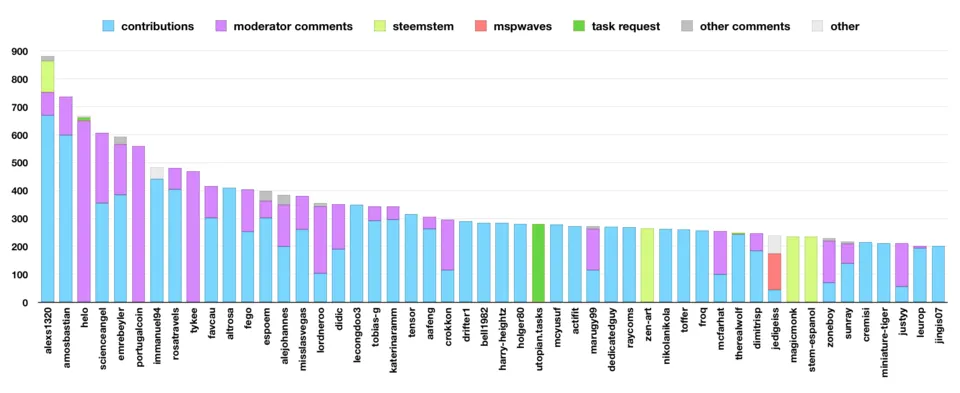
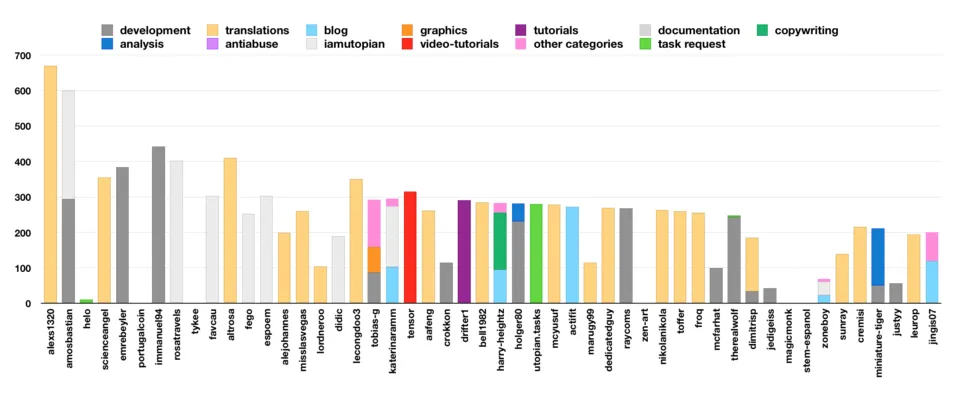
November
November top 50 for comparison.
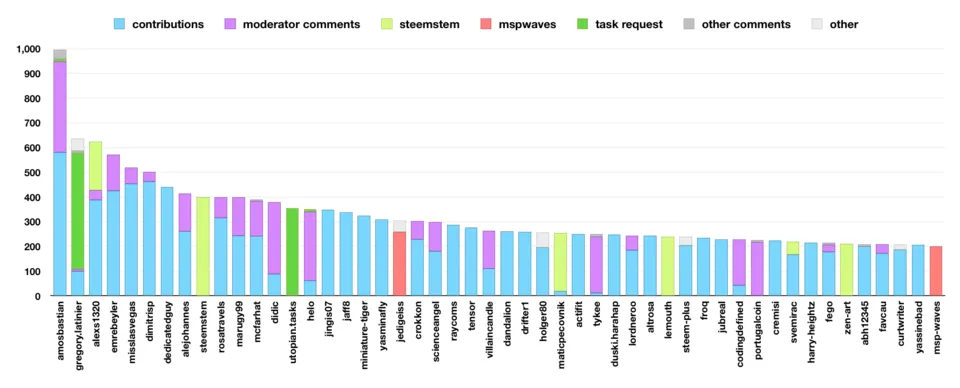
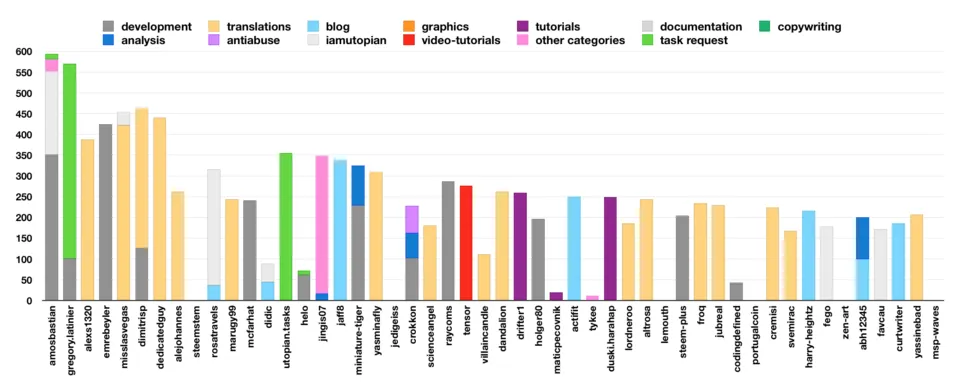
October
October top 50 for comparison.
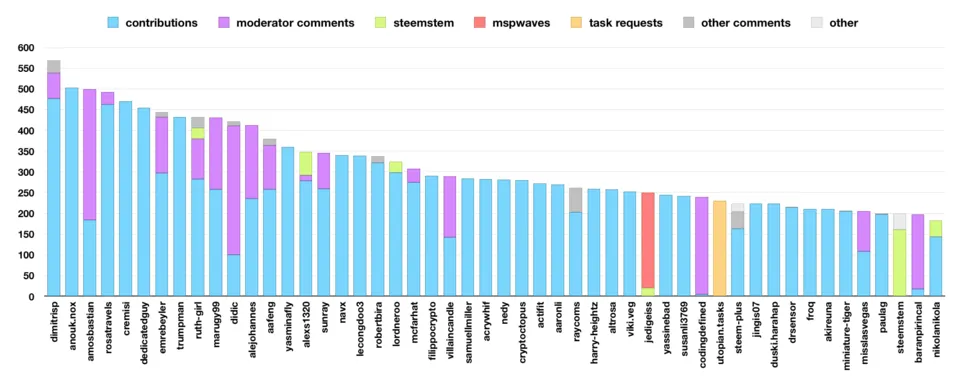
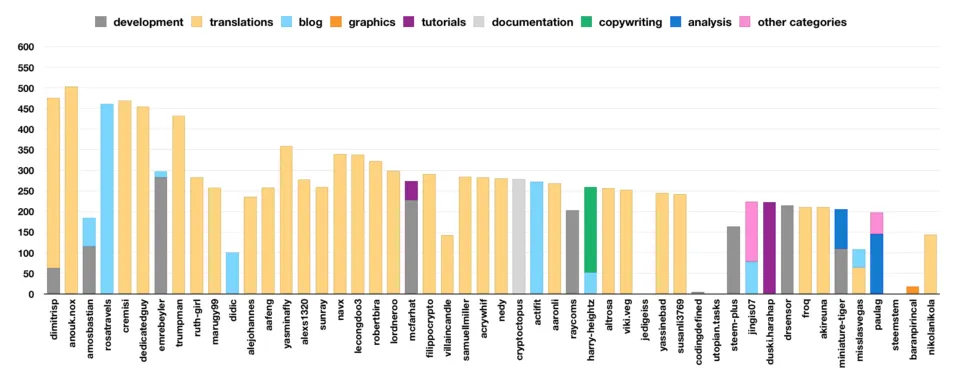
Repository:
This analysis relates to the Utopian open-source project. The relevant repositories are:
- utopian-io/utopian-bot
- utopian-io/utopian.io
Tools and scripts:

I used the block.ops analysis system to produce this study. Block.ops is an open-source analysis tool designed for heavy-duty analyses of the Steem blockchain data.
You can find the repository for block.ops here:
https://github.com/miniature-tiger/block.ops
The analysis used all the Steem blocks from the months analysed. This is approximately 900,000 blocks for each month.
The study can be recreated by:
- Loading the data for the relevant time period into block.ops.
- Using the utopianvotes command from the command line, for example:
$ node blockOps utopianvotes "2018-11-01" "2018-12-01"
As usual, the main difficulty in producing this analysis involved correctly allocating posts to their respective categories and contribution types. This relied entirely on the tags and links included in each post. The order / logic I have used for the allocation is as follows:
- Moderator comments based on having the appropriate links to Utopian guidelines and help.
- Contribution post type based on the tags 'Utopian-io' and the first contribution type that appears. Special consideration taken for idea / ideas and social / visibility.
- Steemstem post based on steemstem vote.
- Task request based on the tags 'Utopian-io' and the first task-contribution type.
- mspwaves post based on msp-waves or mspwaves tag.
- Other posts and comments based on postComment indicator.
Whilst I have made my best effort in this categorisation, I cannot promise to have allocated every post correctly.
Thanks for reading!